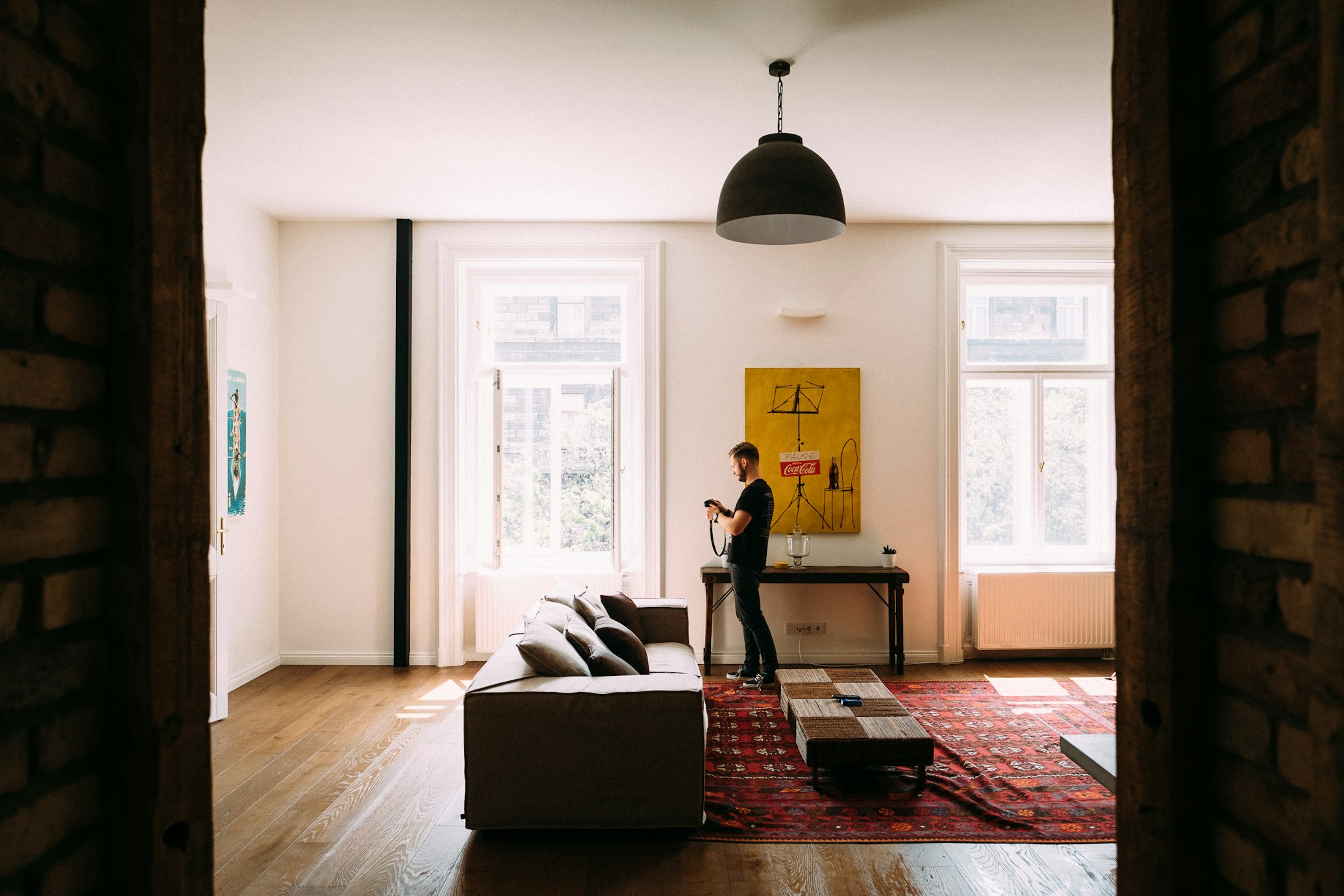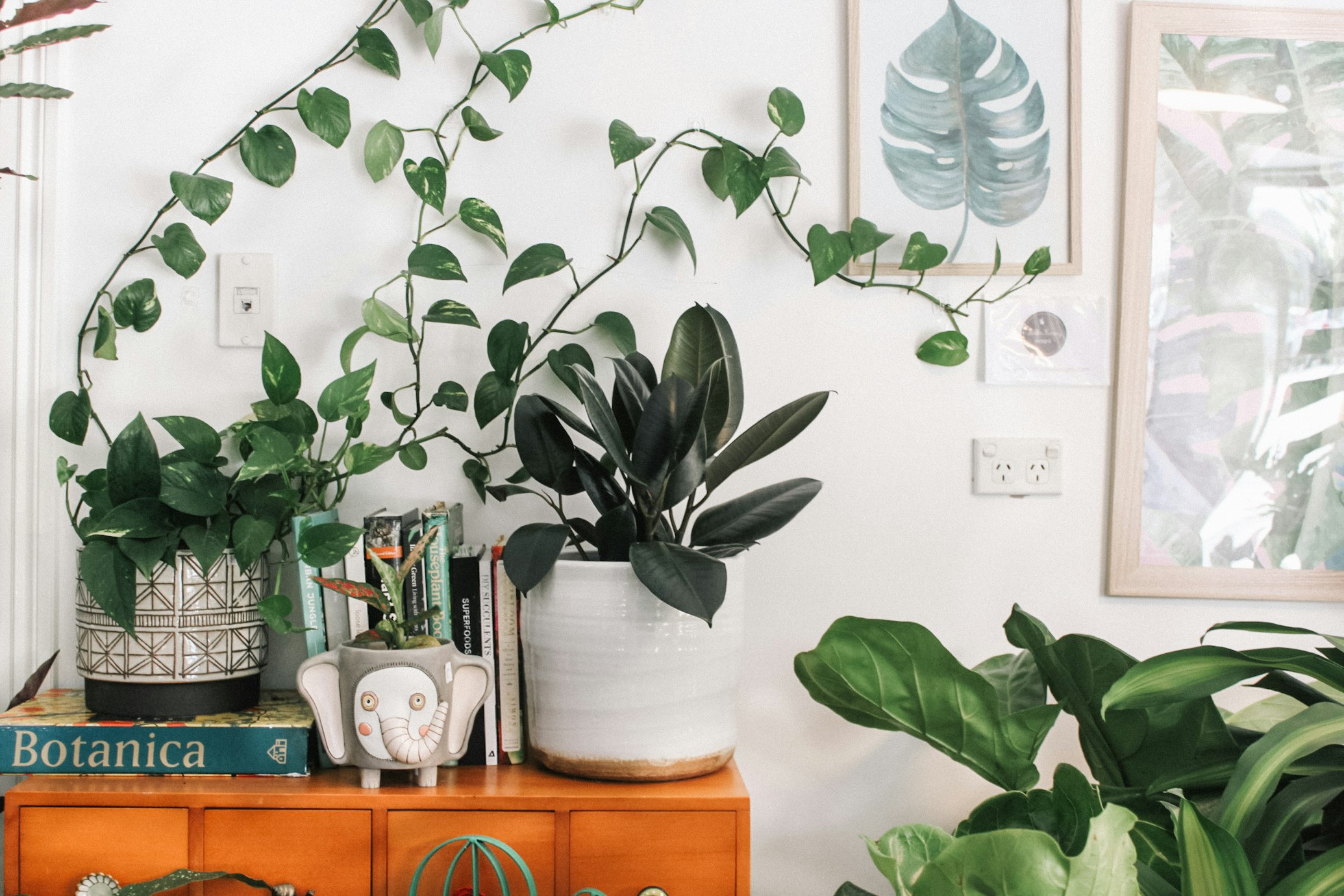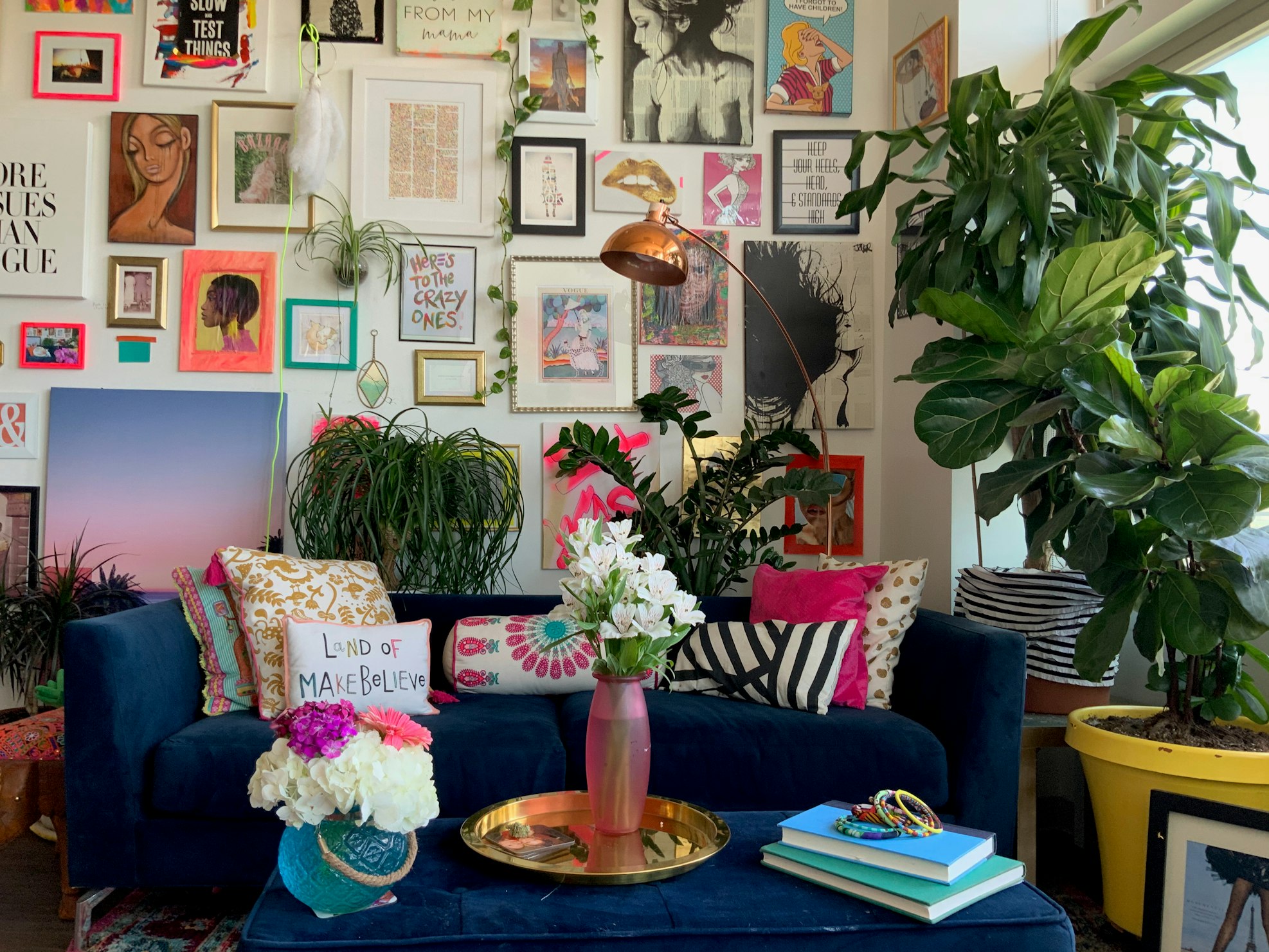Interior design is not just about aesthetics; it’s a psychological endeavour that can significantly influence our mood and mental well-being. Colour is one of the most potent tools in an interior designer’s arsenal. The psychology of colours in interior design shapes our experiences and interactions within a space. Understanding the psychological and emotional effects of different painting choices can transform a mere room into a sanctuary that reflects and enhances our emotional state.
Colour Psychology in Interior Design
Colour psychology in interior design studies how colour influences our emotions and behaviours. Room colour psychology reveals that colours profoundly affect our feelings and behaviour, with each hue capable of invoking a distinct psychological response. The serene tranquillity of blue makes it a favoured choice for relaxing spaces, such as bedrooms and bathrooms.


Its calming effect provides a serene backdrop conducive to rest and rejuvenation. Conversely, the vivacity of red and orange hues can energise a room, sparking lively conversations and stimulating appetites, making them perfect for social hubs like dining rooms. These tones infuse spaces with warmth and excitement, encouraging interaction and enjoyment.
Understanding the emotional connotations of different colours allows for strategic interior design choices that enhance the atmosphere of a space, tailoring environments to foster the desired mood and activity, whether it’s relaxation in private quarters or social engagement in communal areas.
The Emotional Impact of Colour Choices
The emotional impact of colour choices in interior design profoundly influences mood, feelings, and behaviours. Warm colours like red, orange, and yellow evoke warmth and comfort but can also stimulate and energise. For example, orange is associated with happiness, calmness, joy, passion, and desire, making it a suitable colour for bedrooms, exercise areas, and kitchens, where it can stimulate appetite.

On the other hand, cool colours such as blue, green, and purple are linked to calmness, tranquillity, and relaxation. Blue, in particular, is valued for its calming effects, promoting clarity, order, and relaxation, making it an excellent choice for rooms requiring concentration or rest. Using blue thoughtfully is essential, as darker shades can sometimes evoke sadness or coldness. Green, echoing the hues of nature, brings freshness, peace, and trust into a space, with lighter shades offering a positive effect and darker greens sometimes being associated with negative emotions, such as jealousy.

Neutral colours like white, beige, and grey tend to fade into the background and have minimal psychological impact, making them ideal for rooms used for various purposes or where simplicity is desired. However, the light or darkness of colour also matters; darker colours can make a space feel smaller or cosier, while lighter colours make a room feel more expansive and airy.
When selecting paint colours for a space, it’s essential to consider the room’s function and the mood you wish to evoke, taking into account the psychological effects of your colour choices. Combining colours thoughtfully can enhance the psychological and emotional impact, creating a balanced and harmonious environment.
How Does Lighting Affect Paint Colours?
Understanding how lighting interacts with paint colours is crucial for successful interior design implementation. The psychology of colours in interior design becomes even more complex when we consider how different lighting conditions can dramatically alter our perception of colour and its emotional impact.

Natural light reveals colours in their truest form, but it changes throughout the day. Morning light tends to be cooler and bluer, while afternoon light becomes warmer and more golden. Evening light can cast an orange or pink hue that significantly affects how paint colours appear. A serene blue that feels calming in morning light might appear cold and unwelcoming in the evening without proper artificial lighting.
Artificial lighting sources each have distinct characteristics that influence room colour psychology. Incandescent bulbs emit warm, yellowish light that enhances reds, oranges, and yellows while making blues and greens appear duller. LED lights can be adjusted for colour temperature, offering flexibility in how colours are perceived. Cool white LED lighting (4000K-5000K) brings out blues and greens effectively, making them ideal for workspaces where focus is required. Warm white LEDs (2700K-3000K) enhance warm colours and create a cosy atmosphere perfect for living areas and bedrooms.
Fluorescent lighting, common in commercial spaces, tends to cast a greenish tint that can make skin tones appear sallow and alter colour perception significantly. When planning your colour scheme, always test paint samples under different lighting conditions throughout the day and with your intended artificial lighting to ensure the desired psychological effect is maintained across all lighting scenarios.
Colour Schemes and Pairing Techniques
Effective colour schemes form the foundation of successful interior design, amplifying the psychological impact of individual colours through strategic combinations. Understanding different colour scheme types allows designers to create harmonious spaces that support desired emotional outcomes.
1. Monochromatic Colour Schemes
Monochromatic schemes use variations of a single colour, incorporating different tints, tones, and shades. This approach creates a sophisticated, cohesive look while maintaining the psychological benefits of your chosen hue. For example, a monochromatic blue scheme might include navy walls, powder blue accents, and steel blue furnishings, all contributing to a calm, focused environment ideal for bedrooms or home offices.
The psychology of colours in interior design shows that monochromatic schemes are particularly effective for creating restful environments, as they eliminate visual competition between colours and allow the eye to relax.
2. Analogous Colour Schemes
Analogous schemes combine colours that sit next to each other on the colour wheel, such as blue, purple, and green. These harmonious combinations feel natural and pleasing to the eye while maintaining distinct personalities. An analogous scheme using warm colours (red, orange, yellow) creates an energetic, welcoming atmosphere perfect for social spaces, while cool analogous combinations (blue, purple, green) promote tranquillity and focus.
3. Complementary Colour Schemes
Complementary schemes pair colours directly opposite each other on the colour wheel, creating high contrast and visual excitement. Examples include blue and orange, red and green, or purple and yellow. While these combinations can be striking, room colour psychology suggests using them carefully—the high contrast can be overstimulating if both colours are used in equal intensity. Instead, use one colour as the dominant hue and its complement as an accent to create visual interest without overwhelming the senses.
4. Triadic Colour Schemes
Triadic schemes use three colours equally spaced around the colour wheel, such as red, blue, and yellow. These combinations offer vibrant contrast while maintaining harmony. In interior design, triadic schemes work best when one colour dominates, with the other two serving as accents. This approach harnesses the psychological benefits of multiple colours while avoiding visual chaos.
5. Tips for Effective Colour Pairing
When combining 2-3 hues in interiors, follow the 60-30-10 rule: use your dominant colour for 60% of the space (walls, large furniture), a secondary colour for 30% (upholstery, curtains), and a bold accent colour for 10% (pillows, artwork, accessories). This proportion creates visual balance while allowing each colour’s psychological properties to contribute to the overall atmosphere.
Consider the psychological interaction between colours when pairing them. Warm colours paired with cool neutrals can balance energy and calm, while different intensities of the same colour family create depth without psychological conflict. Always test colour combinations in your specific lighting conditions, as the interplay between hues can change dramatically under different light sources.
Colour Psychology in Interior Design for Personal Spaces
Personal spaces, such as bedrooms and home offices, require careful consideration of colour psychology in interior design. The colours we choose for our living spaces can significantly impact our daily lives, influencing our mental state and activities. Opting for soft, muted tones in bedrooms can be particularly beneficial, as these colours foster a peaceful, relaxing environment conducive to improved sleep quality. The calming effect of these hues helps in winding down after a long day, encouraging a restful night’s sleep, which is crucial for overall health and well-being.

On the other hand, home offices require a different approach. Here, more vibrant colours can boost mental energy and enhance productivity. Green, for example, is an excellent choice for such spaces. Known for its relaxing properties, green can help reduce anxiety, thereby creating a more focused and efficient work environment. It promotes concentration and can contribute to a more productive work session, making it an ideal colour for areas dedicated to study or work. The strategic use of colour in interior design can thus transform not only the aesthetic of a space but also its functionality, directly affecting our daily routines and state of mind.
Colour Psychology in Interior Design for Shared Spaces

Shared spaces, such as living rooms and kitchens, are areas where families come together. Utilising room colour psychology can foster a welcoming atmosphere. Warm and inviting colours, such as soft yellows and earthy tones, play a crucial role in interior design, particularly in communal spaces where social interaction is paramount.
These hues are known for creating a cosy and welcoming atmosphere, encouraging guests to relax and engage with one another. Soft yellows, often associated with sunshine and happiness, can brighten a room and imbue it with energy and warmth. Earthy tones draw inspiration from nature, bringing a calming and grounded feel to a space that makes it more inviting and comfortable for social gatherings.
In contrast, the overuse of bold and intense colours in shared living areas can have the opposite effect. While such vibrant hues can energise a space and make it visually striking, they can also be overpowering if not used judiciously. Spaces dominated by intense, vivid colours might lead to feelings of restlessness or discomfort among guests, as these colours can stimulate the senses to a point where it becomes overwhelming.
It’s essential to balance colour choices to ensure communal areas remain welcoming and conducive to relaxation and conversation.
Conclusion
The psychology of colours in interior design is a powerful tool that can significantly impact the emotional and psychological well-being of occupants. By thoughtfully considering the psychological and emotional effects of various painting choices, understanding how lighting affects colour perception, and implementing effective colour schemes and pairing techniques, interior designers can create spaces that look beautiful and feel harmonious, supporting the inhabitants’ mental and emotional needs.
Room colour psychology extends beyond simple aesthetic preferences—it’s about creating environments that nurture, energise, or calm as needed. Whether designing a personal retreat or a communal gathering space, the thoughtful application of colour psychology in interior design can transform any area into a nurturing environment that resonates with the desired mood and ambience. By mastering these principles and techniques, you can harness the full potential of colour to create spaces that truly enhance daily life and well-being.
FAQs
Colour psychology examines how different hues affect our emotions, behaviour, and overall well-being within a space.
Warm tones tend to energise, stimulate conversation, and create a sense of warmth and comfort—ideal for dining rooms and social areas.
Opt for cool hues in bedrooms, home offices, or any space where relaxation, focus, or calmness is the priority.
Yes – whites, greys, and beiges act as a canvas, making a room feel spacious or highlighting accent pieces without imposing a strong emotional tone.
Pair vivid accent walls or furnishings with softer, complementary neutrals to avoid overwhelming the senses while still retaining energy.
Think about the room’s function (rest vs. work), natural light, furniture tones, and the emotional atmosphere you wish to cultivate.
Different lighting conditions can dramatically alter colour perception. Natural light changes throughout the day, while artificial lighting sources (LED, incandescent, fluorescent) each cast different tints that can enhance or diminish certain colours.
The four main colour schemes are monochromatic (variations of one colour), analogous (neighbouring colours on the wheel), complementary (opposite colours), and triadic (three equally-spaced colours).
Use your dominant colour for 60% of the space, a secondary colour for 30%, and a bold accent colour for 10% to create balanced, harmonious interiors.

